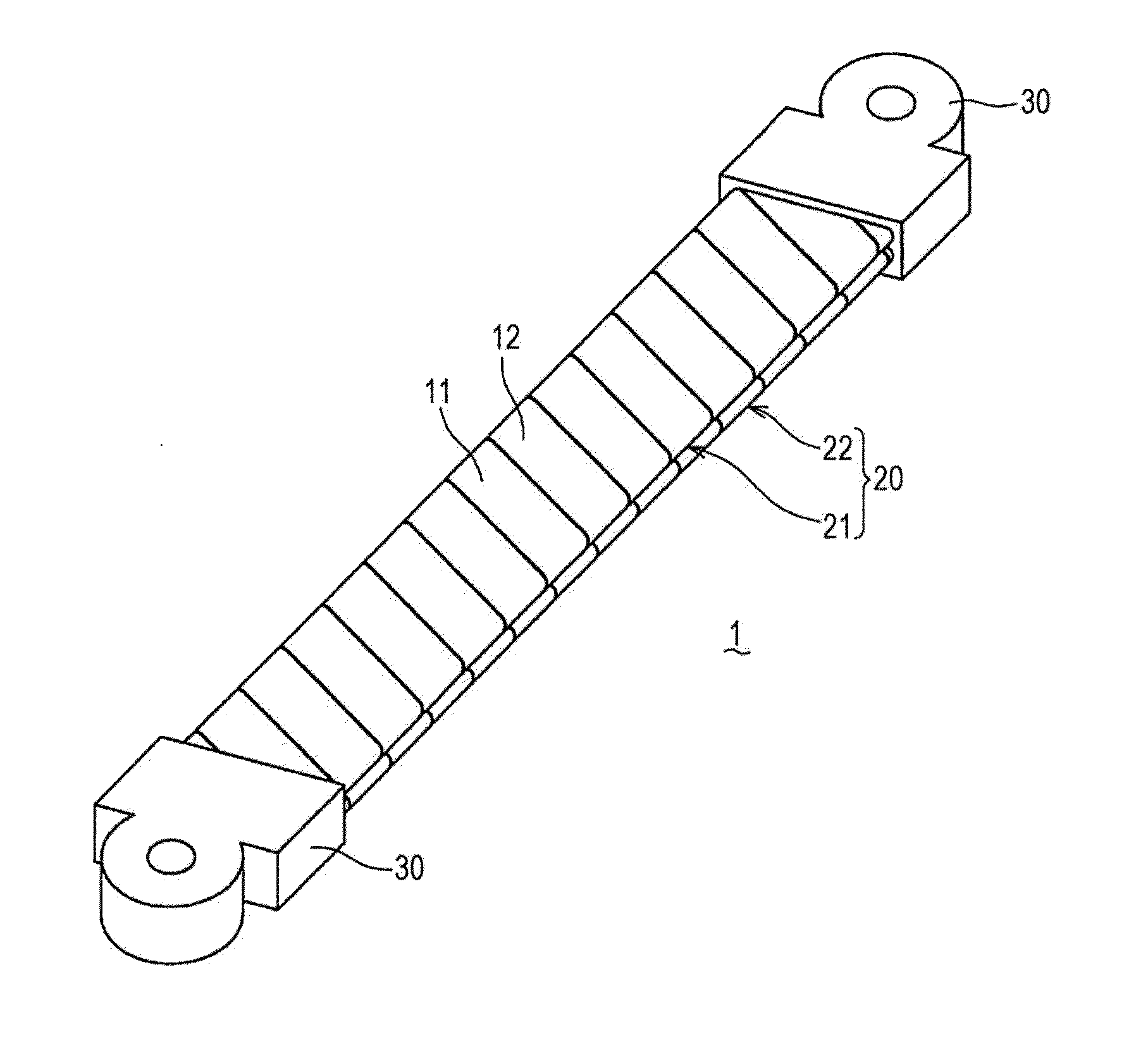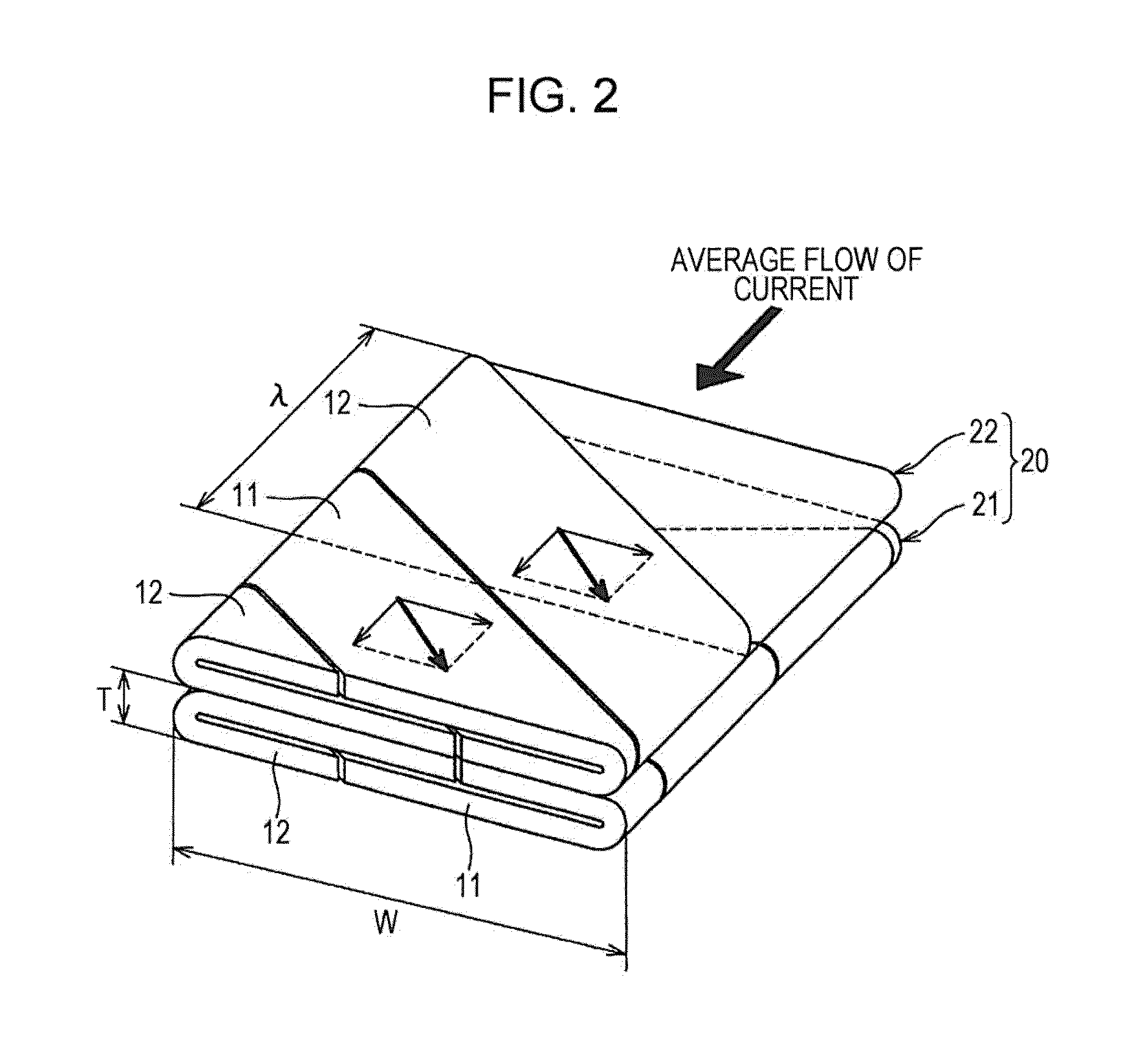Bus bar, bus bar module, and method of manufacturing bus bar
a bus bar and module technology, applied in the direction of insulated conductors/cables, cables, insulating conductors, etc., can solve the problems of increasing the effective resistance within the conductor, increasing the so-called copper loss (or iron loss), and increasing the so-called iron loss, so as to reduce the loss of eddy current due to high-frequency current
- Summary
- Abstract
- Description
- Claims
- Application Information
AI Technical Summary
Benefits of technology
Problems solved by technology
Method used
Image
Examples
first example
[0101]A first example of the bus bar 1 according to the present embodiment was subjected to AC resistance analysis. The results thereof will be described in detail below with reference to FIG. 14.
[0102]In the first example, a copper plate 0.6 mm in total thickness, which is 1 mm to several mm thinner than a commercially-used article actually used as bus bar 1, was used and frequency dependency of AC resistance was measured. In the first example, the first conductive wire 21 and the second conductive wire 22 were manufactured from two stripe conductors 11 and 12 0.15 mm t thick×19 mm W wide by the bus bar 1 manufacturing method according to the above-described embodiment. The first conductive wire 21 and the second conductive wire 22 where then brought into close contact, thereby manufacturing a laminated conductive wire 20 0.6 mm t thick×19 mm W wide to which terminal parts 30 were bonding, thus manufacturing a bus bar 1 which was used. The bus bar 1 according to the first example w...
second example
[0108]A second example of the bus bar 1 according to the present embodiment was subjected to AC resistance analysis and current density distribution analysis. The results thereof will be described in detail below with reference to FIG. 15 through FIG. 18.
[0109]The bus bar 1 according to the second example was manufactured by the following procedures. First, stripe conductors 11 and 12 0.3 mm in thickness were wound in a spiral form with a gap of 0.4 mm therebetween. Thus, a first conductive wire 21 and second conductive wire 22 1.0 mm t thick×19 mm W wide were formed. Now, the gap between the stripe conductors 11 and 12 means a gap between the opposing surfaces on the interior of the wound stripe conductors 11 and 12, i.e., internal space in the first conductive wire 21 and the second conductive wire 22. The second conductive wire 22 was wound in spiral form in the opposite direction as to the first conductive wire 21. Next, the first conductive wire 21 and second conductive wire 22...
PUM
| Property | Measurement | Unit |
|---|---|---|
| aspect ratio T/W | aaaaa | aaaaa |
| aspect ratio T/W | aaaaa | aaaaa |
| total thickness | aaaaa | aaaaa |
Abstract
Description
Claims
Application Information
 Login to View More
Login to View More - R&D
- Intellectual Property
- Life Sciences
- Materials
- Tech Scout
- Unparalleled Data Quality
- Higher Quality Content
- 60% Fewer Hallucinations
Browse by: Latest US Patents, China's latest patents, Technical Efficacy Thesaurus, Application Domain, Technology Topic, Popular Technical Reports.
© 2025 PatSnap. All rights reserved.Legal|Privacy policy|Modern Slavery Act Transparency Statement|Sitemap|About US| Contact US: help@patsnap.com



